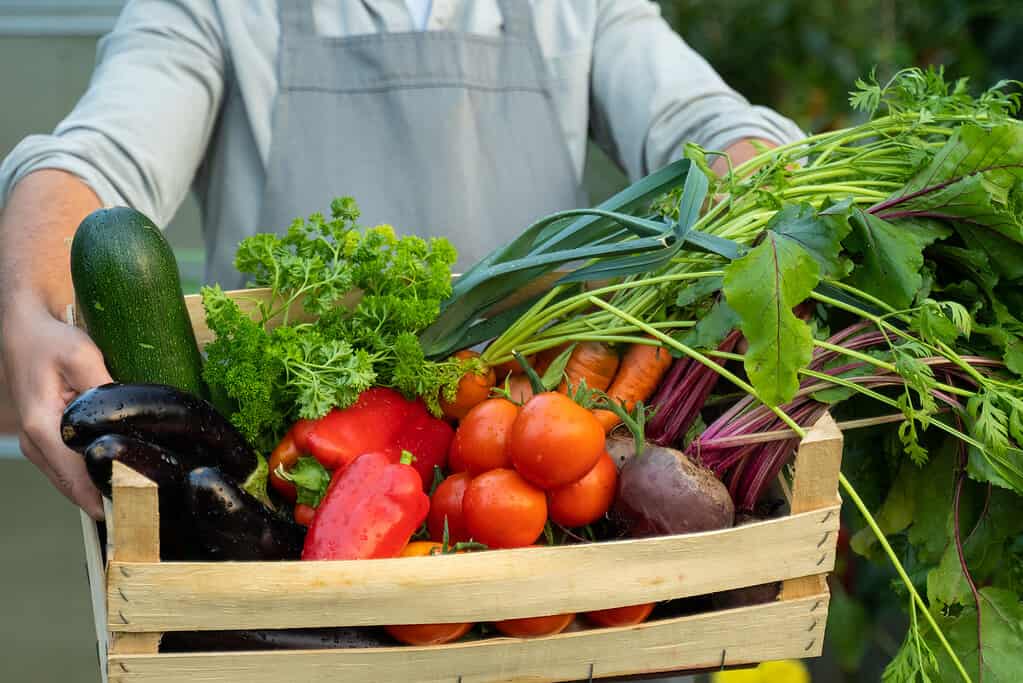
Consuming vegetables can lower the risk of stroke, heart disease, cancer, and other health issues.
©Viktoria Korobova/iStock via Getty Images
Eating vegetables is a great way to maintain health, youth, and vitality. In the last decade, we have learned to include vegetables of different colors in our diet. When you think about vegetables that start with a different letter of the alphabet, the letter K is hard. Most people are unaware of many of the vegetables that start with the letter K because most of these vegetables originate in other countries like Japan, China, or Indonesia.
1. Kabocha Squash
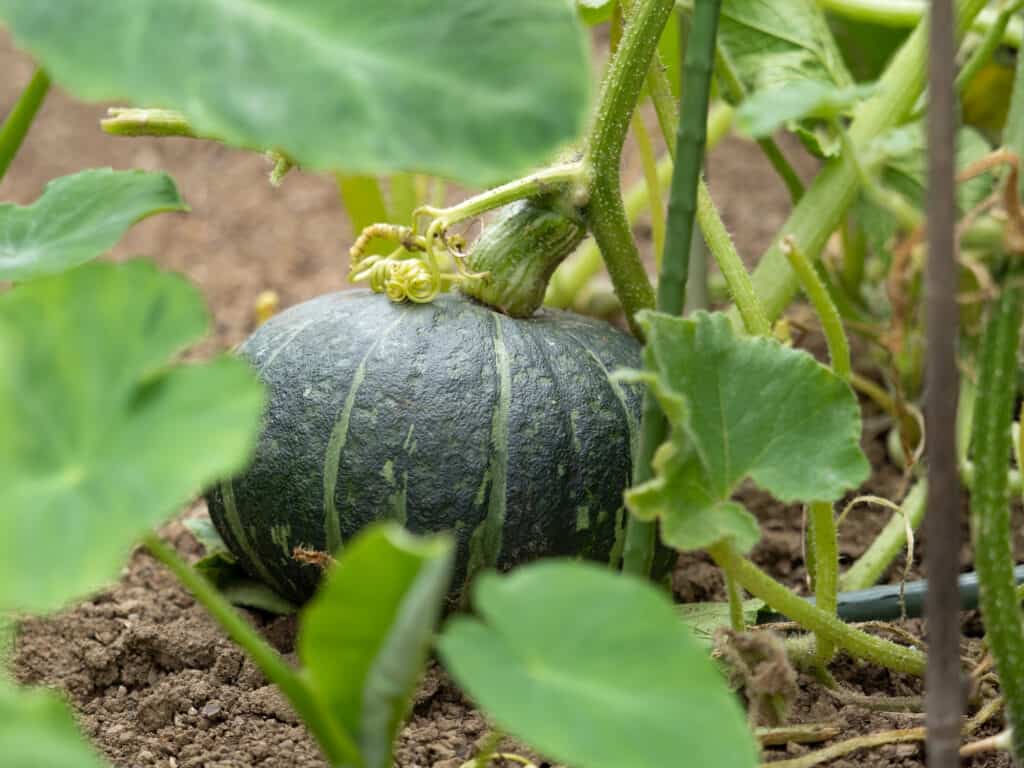
The first vegetable that starts with a K is Kabochi squash.
©iStock.com/y-studio
Another name for kabochi is Japanese pumpkin. The exterior skin of this squash is a deep green, and the inside is orange. It is sweet and flavorful. It tastes like a cross between a pumpkin and a sweet potato. You can make any dish that you usually make with sweet potatoes or pumpkins using Kabocha as a substitute.
This squash contains iron, beta-carotene, and other essential vitamins and minerals. When selecting a Kabocha, look for the deepest green color on the skin. The squash should weigh between two and four pounds. Freeze uncooked portions of this vegetable for up to one month in the freezer.
Before you peel the squash and discard the skin, you should know that the skin is edible. Add the skin to your recipe when making soups or adding them to tempura. Remove the green skin when you want the orange flesh to be prominent.
2. Kai Lan
Chinese broccoli or Chinese kale are two other names for kai lan. If you have eaten broccolini, you have eaten a hybrid made from broccoli and gai kan or kai lan. This leafy green vegetable looks like broccoli. It has thick stems and florets of greens on the top. It looks like broccoli, but it is a member of the cabbage family.
This is a favorite Chinese vegetable. It is available year-round, and you can get the tender baby kai lan or the mature kai lan. When choosing a bunch of kai lan, you look for deep green colors on the stalks and leaves. Avoid bunches that have yellow leaves.
If the flower buds have formed on top of the florets, the stalks will be tough and stringy. If you get a bunch of flowers, remember that the flowers are edible. There are several methods of cooking this vegetable, but steaming is the favorite way to prepare it.
3. Kale
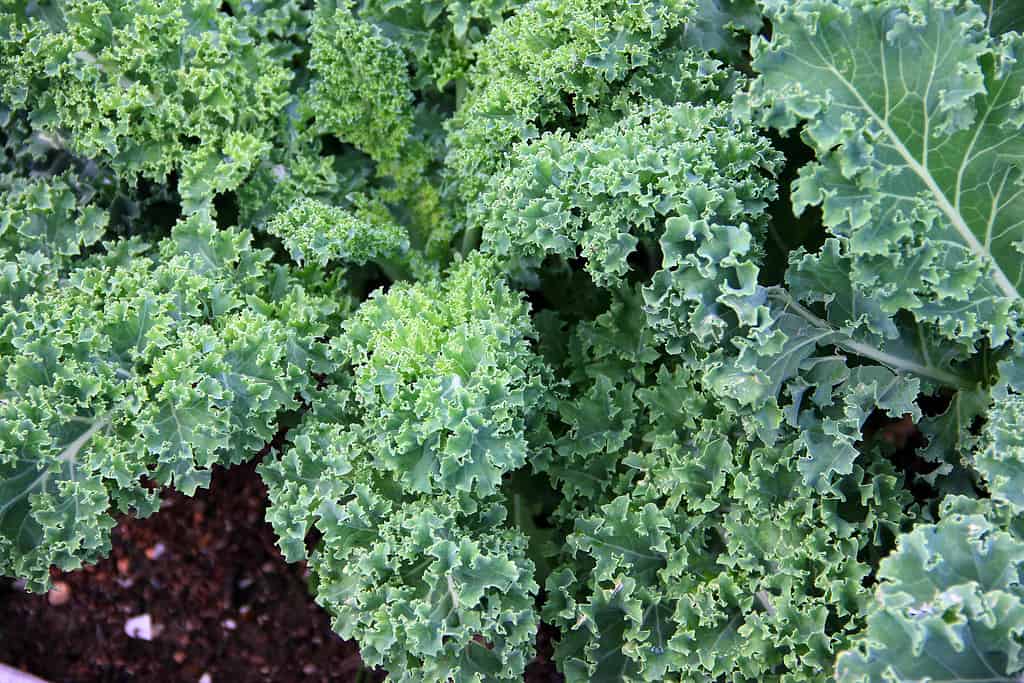
The third vegetable that starts with a K is kale.
©/ via Getty Images
Kale is a member of the cabbage family. The other name for kale is leaf cabbage. Eating one cup of kale will give you 100% of the vitamins A and K you need. It is also an excellent source of lutein. Lutein is a nutrient that is good for vision and eye health. The lutein in the plant is responsible for the coloration of the leaves. Most people think of kale as a green vegetable, but it also comes in white, purple, and bluish-green.
Serve this vegetable uncooked in salads or cooked. The best time to harvest kale is after the first frost. This gives it time to transform some of the starches into sugars, making the vegetable more palatable.
4. Kang Kong
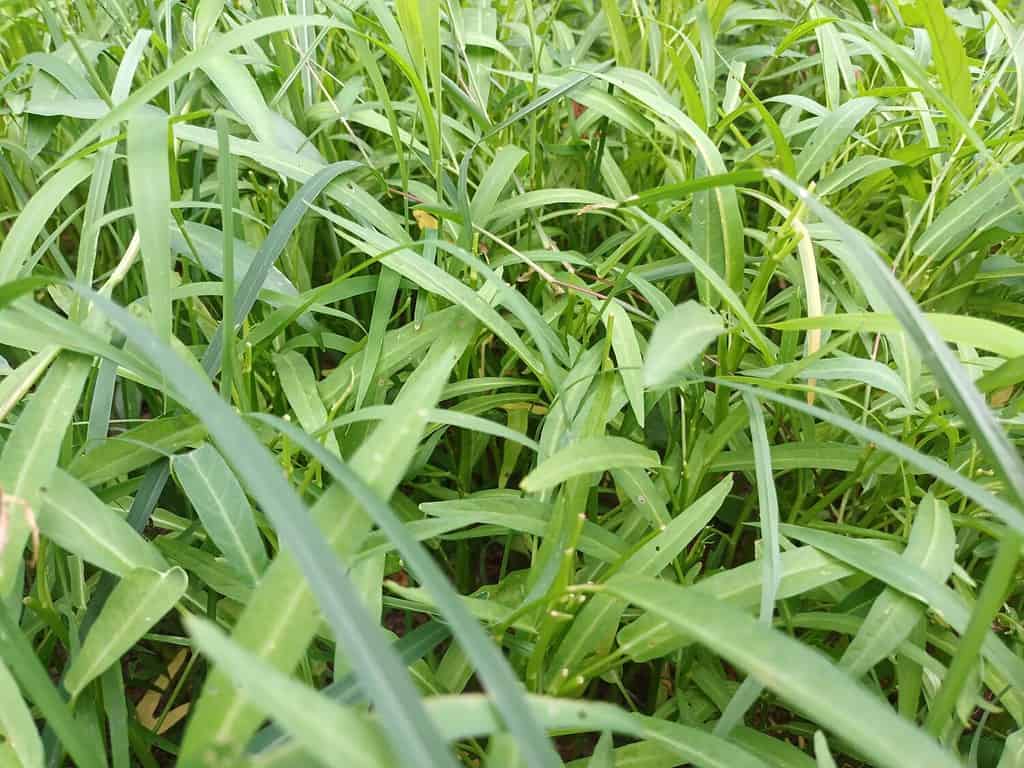
The fourth vegetable that starts with a K is Kang Kong.
©spndpatty/Shutterstock.com
Kang kong has several names, including water spinach, swamp cabbage, and Chinese watercress. This beautiful green tastes best when served uncooked in a salad of fresh greens. This vegetable is very low in calories. An entire cup only has 19 calories.
The stems of kang kong are hollow, like the stems of watercress. It is a fast-growing plant, ready to harvest 45 days after planting the seeds. You want to harvest the plants before they bloom their purple flowers. When young, it is delicious in salads. Older plants are cooked in stir-fry dishes or steamed.
5. Kencur
Another name for kencur is aromatic ginger. This vegetable will spice up your dishes, and it has many medicinal qualities. Medicinal benefits from this Indonesian plant include maintaining blood sugar, treating diarrhea, aiding in postpartum recovery, and being a cough remedy to help relieve a phlegmy cough. Kencur will increase the appetites of children.
Aromatic ginger is an ingredient in Szechuan food and Balinese curries. It would be best to use kencur sparingly to avoid making the food too spicy.
6. Kelp

The sixth vegetable is kelp.
©iStock.com/Shur_ca
Kelp offers many health benefits. It is most commonly called seaweed and grows in the oceans. Kelp is high in fiber. 25 to 75% of the dried weight of kelp is a fiber called alginate. Studies show that seaweed is beneficial for treating arthritis and preventing Alzheimer’s disease.
Seaweed is low in calories. It also contains an antioxidant called fucoxanthin. Fucoxanthin has been researched as a fat burner. Kelp is high in iodine, which the human body needs for proper thyroid function.
This vegetable from the sea is eaten raw in salads, cooked in soups, and steamed. There is more than one variety of kelp. The most popular kelp varieties are bull kelp, kombu, arame, and wakame.
7. Ketchup
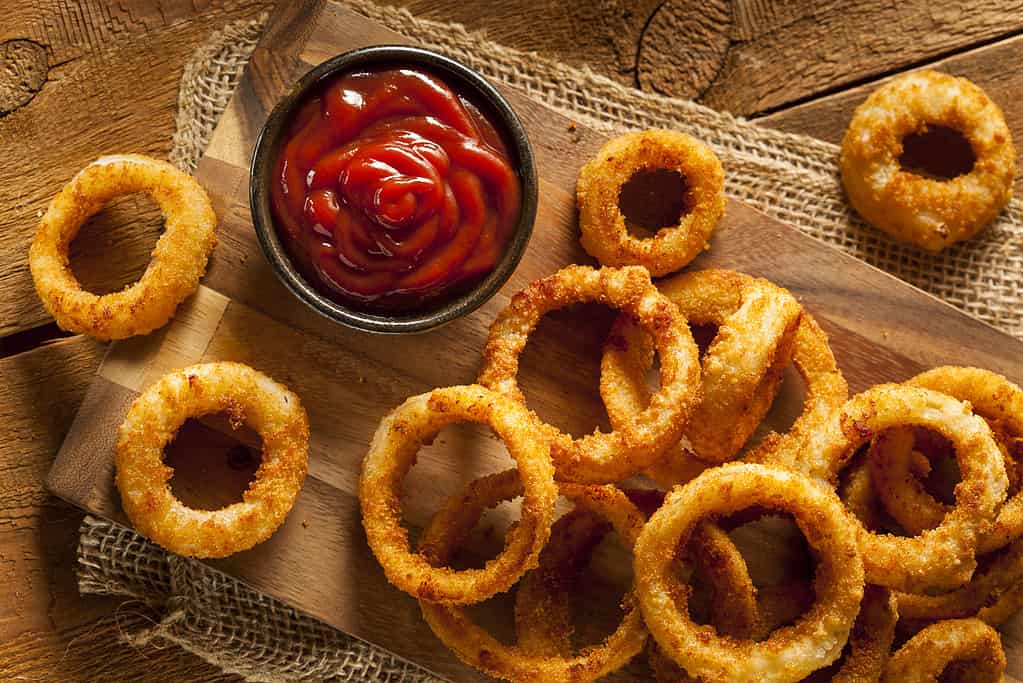
The seventh vegetable, according to the U.S. government, is ketchup.
©Brent Hofacker/Shutterstock.com
Ketchup as a vegetable is not a joke. During the Reagan administration, ketchup was declared to be a vegetable. This declaration made it possible for school systems to say they were serving well-balanced meals to children because they could count this sugar-rich condiment as a vegetable.
The government could slash the money they were spending on school lunch subsidization by naming ketchup a vegetable. Most people do not accept ketchup as a vegetable. It is a combination of ingredients, and it has a lot of sugar in it.
Sorry folks, ketchup was labeled a vegetable for school lunches in 1981. In reality, ketchup is a tasty condiment.
8. Kidney Beans
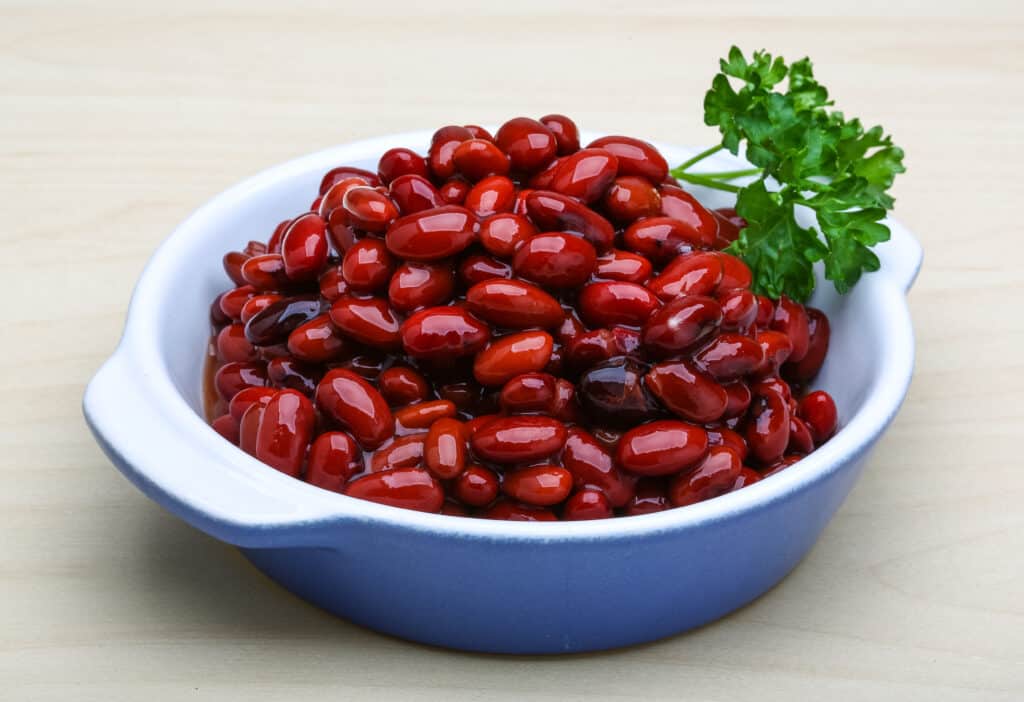
The eighth vegetable that begins with a k is kidney beans.
©Andrey Starostin/Shutterstock.com
Kidney beans are a healthy addition to any diet. These beans contain high fiber, vitamin K, folate, thiamin, potassium, and many other nutrients. Eating kidney beans will help lower your cholesterol levels and control blood sugar levels.
These beans can be picked fresh, purchased in a can, or dried. Each variety maintains the healthy benefits of the bean. They are a low-cost food source that will stretch your food budget. Serve them as a main dish with rice or as a side dish to enhance your main entree.
9. Kohlrabi
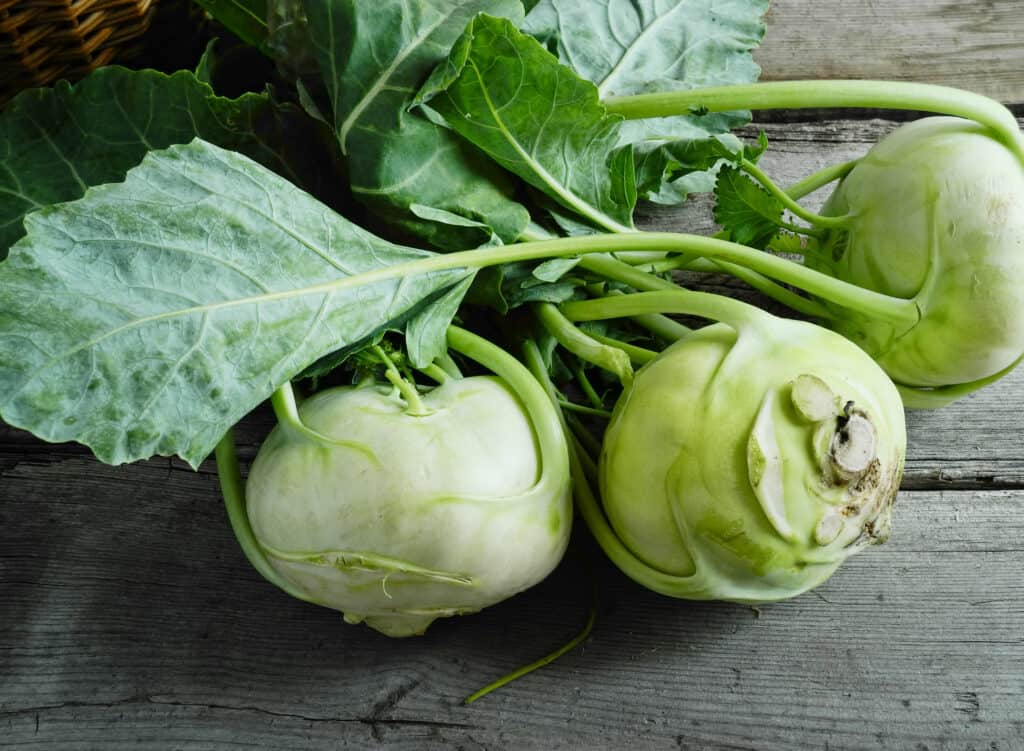
The ninth vegetable is kohrabi.
©Haskounek/Shutterstock.com
Other names for kohlrabi are German turnip and turnip cabbage. Kohlrabi is low in calories and has a low glycemic index. Because of the low glycemic index, diabetics can eat vegetables without worrying about their blood sugar levels.
Serve Kohlarabi raw, use it in soups, steam it like cabbage, or make it into a slaw. It has a mild taste, which allows it to be paired with most entrees. My personal favorite use for kohlrabi is as a substitute for pasta. I shred the kohlrabi into thin slices and steam it until tender. I do not add salt or seasoning while the kohlrabi is cooking. After it is prepared, I top it with spaghetti sauce. It gives me a healthy plate of “spaghetti,” and I do not worry about my blood sugar or weight being influenced by my meal.
10. Komatsuna
Komatsuma is a leafy green with a mild, spicy flavor like mustard green. Japanese mustard spinach is a common name for komatsuma. This leafy green is tolerant of cold temperatures and heat, so it can be grown and harvested in most areas. Extreme heat will make the plant bolt or bloom early. Serve this green as a salad ingredient when it is young, simmer it, add it to soups and stews, or use it as an ingredient in stir-fry and similar dishes.
Komatsuma is unique because it can maintain its firm texture when cooked in a soup. It is high in antioxidants, fiber, and other essential nutrients. Treat the komatsuma like greens, and wash it thoroughly before you serve or cook with it.
11. Kombu
Kombu is one of the varieties of kelp that is commonly eaten. The kelp that kombu derives from is dried before it is eaten. The flavor of the dried seaweed is close to the same flavor you find in a mushroom. This form of seaweed is eaten in East Asia and Korea.
You can use the seaweed in many dishes, like soups, rice, and stir-fried meals. It has an almost nutty aroma when cooked and a natural salty taste. Kombu salad is a healthy dish with fiber, flavor, and essential nutrients.
12. Kovakkai
Kovakki is a gourd that, when eaten raw, tastes like a cucumber. The taste difference between the kovakki gourd and cucumber is the metallic aftertaste that you get when eating the gourd. This gourd is popular in Asia and Southeast Asia. It is rich in nutrients, low in calories, and low in carbs.
Serve this vegetable by frying it, using it in a salad, as part of a stir-fry, or adding it to soups and stews. You will find many uses for the kovakki, including slicing it raw and eating it with a mild dip.
13. Kyona
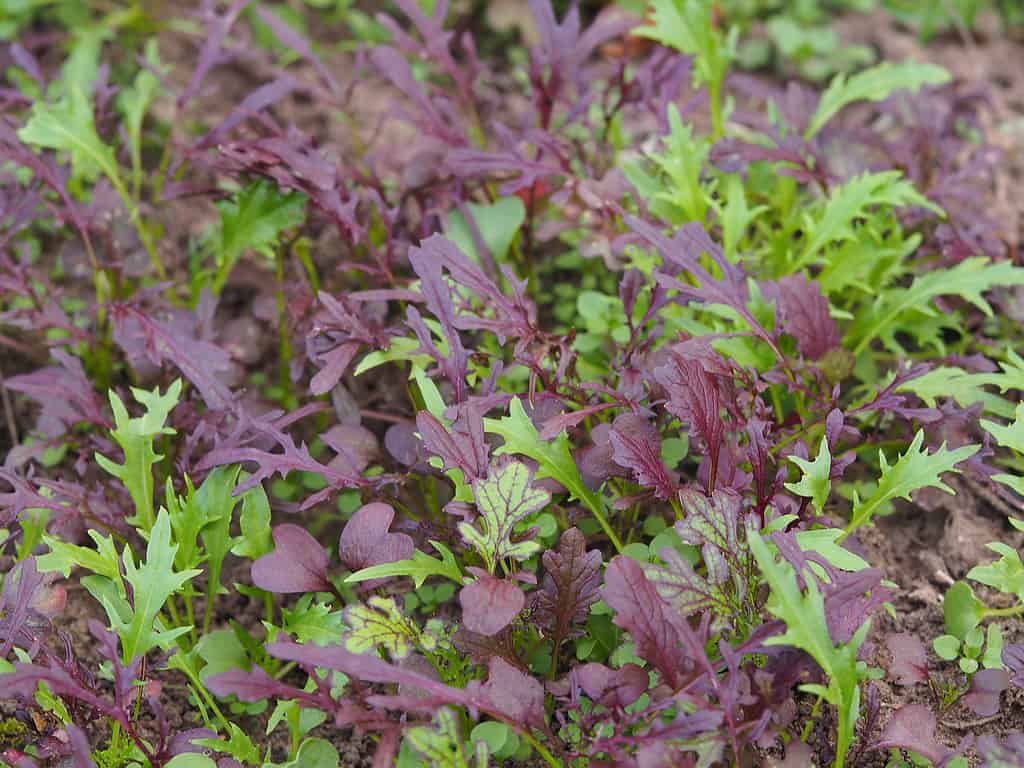
The thirteenth vegetable is kyona.
©Elena Zakharova/iStock via Getty Images
Kyona is an excellent vegetable that tolerates cold weather. When the kyona plant is exposed to cold temperatures, the flavor of the leaves is enhanced. Other names for kyona include Mizuna and Japanese mustard. The plants develop quickly in the garden, growing until the heavy frost kills them.
Serve kyona greens in fresh salads or soups, simmer the leaves down, or fry the leaves. Their rich flavor adds spice and interest to other foods. The younger kyona leaves are the most tender and have the least amount of the mustard bite the greens are famous for. Older leaves turn a darker green and are tougher than the fresh new leaves.
Summary of All Vegetables That Start With a K
| 1 | Kabocha |
| 2 | Kai Lan |
| 3 | Kale |
| 4 | Kangkong |
| 5 | Kencur |
| 6 | Kelp |
| 7 | Ketchup |
| 8 | Kidney Beans |
| 9 | Kohlrabi |
| 10 | Komatsuna |
| 11 | Kombu |
| 12 | Kovakkai |
| 13 | Kyona |
The photo featured at the top of this post is © ifiStudio/Shutterstock.com
Thank you for reading! Have some feedback for us? Contact the AZ Animals editorial team.







